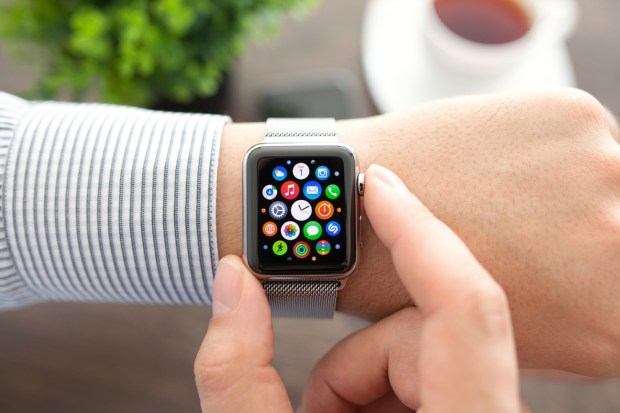New Apple Watch Will Be Free From The iPhone

Apple’s upcoming Apple Watch won’t need to be connected to an iPhone to make calls, acting more like a standalone device, reported CNBC.
According to CNBC, which cited a source with knowledge of the matter, the next iteration of the Apple Watch will roll out in September along with three new iPhone models. In the past, the Apple Watch had to be connected or linked to an iPhone to get texts and make calls. The newest one will have cellular connectivity built in so that it can be a standalone device and cater to more consumers. While Apple has a huge following with its iPhone, there are also scores of people who use other smartphones but may still want access to the Apple Watch. With the cellular connectivity users will be able to stream music without having an iPhone.
“It is a win-win for Apple as it will drive up the average selling price of the device because they will be more expensive,” Neil Shah, research director of devices and ecosystems at Counterpoint Research, told CNBC in the report. “It will cater to the niche market of health and fitness users who don’t want to carry their iPhone when they go for a run. It will also be good for enterprise use cases.”
Earlier this month, Bloomberg, citing several people familiar with the matter, reported that Apple is preparing to roll out a version of the Apple Watch that can make phone calls. The device will be able to connect directly to cellular networks and is slated for release later in 2017. Bloomberg reported that some of the watches will have an LTE chip embedded in them, enabling the Apple wearable device to do many tasks without the need to be close to an iPhone. Current versions of the Apple Watch have to be connected to — paired with — an iPhone to send messages, access maps, get directions and stream music from a user’s library, among other functions. According to Bloomberg, multinational technology company Intel is supplying the chip for the new Apple Watch. The partnership will be welcome news for Intel, which has struggled to maintain its dominance in a world led by smartphones and mobile devices rather than desktop and laptop computers.
